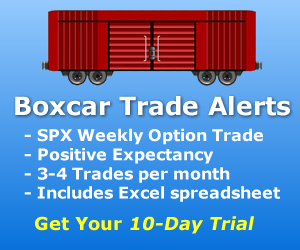Those new to options trading may not fully understand the different prices quoted on options contracts. Today we will discuss the basic prices which can appear in the option chain for an option: bid, ask, mark, and last. I will outline each price, as well as what the bid/ask spread means for options traders.
Below is an example showing the prices for options on AAPL.

Option Chain on AAPL
As you can see from the option chain above, there are corresponding prices for each strike price in the AAPL option chain: Mark, Last, Bid, and Ask.
For the purpose of this article, we will use a hypothetical example of an option chain that shows the following prices for a particular option:
Example A. XYZ Option.
Bid: $2.80
Ask: $3.00
Mark: $2.90
Last: $3.20
• The ask price.
The ask price is the price at which the market is prepared to sell an option. This price is determined by its supply and demand; the more demand there is for a particular option, the higher the ask price will be. We will cover supply and demand in a bit more detail later in this article. Traders looking to purchase the XYZ option in Example A may have to pay the current ask price of $3.00 per option contract.
• The bid price.
The bid price is the price at which the market is currently prepared to buy an option. Therefore, the bid price can many times be the minimum price an options trader could expect to sell that particular option for. In the case of the above example, that price would be $2.80
• The mark price.
The mark price, also called the mid price, is the average of the bid/ask prices. Many traders will use the mid price as their pricing guide when buying and selling options, especially for multi-leg positions such as vertical spreads, calendars, butterflys, Iron Condors, etc. To calculate the mark price in Example A, add 2.80 (ask price) and 3.00 (bid price), which equals 5.80. Now divide 5.80 by two which equals the mark price of 2.90.
• The last price.
The last price is simply the price at which the option was last traded. One thing to keep in mind is if the last price has a significant difference from the bid/ask prices, the option probably has very low liquidity and it may be difficult to find a buyer if a trader should choose to sell the option. During times of high volatility, the bid/ask spreads (further explained below) can also be wide. This can be a reason that the last price may be quite different than the bid/ask price.
Now, a little about the bid/ask spread…
The bid/ask pricing on spreads of options can be related to the basic “supply and demand” concept. Supply is the volume, or abundance, of a particular item in the marketplace, such as the supply of any one particular stock for sale. Demand refers to a buyer's willingness to pay a particular price for an item, or a stock.
Here is an example of how supply and demand works:
Let's say that a one-of-a-kind ruby is discovered in a remote part of Burma by a miner. A potential investor hears about the discovery, contacts the miner and gives him an offer to purchase the ruby for $1 million. The miner requests some time to think about it. In the meantime, the media has gotten hold of the rare find, and other potential buyers come forward expressing their interest in purchasing the gem. Thinking his find will increase in value with all the added attention, the miner rejects the offer for $1 million and holds out for $1.2 million.
Next, two more potential buyers surface and submit bids for $1.3 and $1.4 million dollars, respectively. The new asking price of that ruby is rising.
The next day, a miner in Columbia discovers 20 more gems exactly like the one found in Burma. As a result, both the price and demand for the Burmese ruby falls to $800,000 because of the sudden abundance of the once-rare gem. This example, and the concept of supply and demand in general, can also be applied to options.
What is the difference between the bid and ask price?
The difference between the bid price and the ask price is referred to as the bid/ask spread. The bid/ask spread is representative of the amount of profit to the market maker.
What is important to consider in bid/ask prices is the loss a trader may potentially incur. The tighter the spread between the bid and ask prices, the better the chance a trader has to get a good fill price. All traders are looking for tight bid/ask spreads, particularly day traders, as they enter and exit trades quickly.
To explain further, let's use Example A. In this scenario the option has a bid price of $2.80, and an ask price of $3.00. If a day trader who is bullish purchases a call option at the ask price of $3.00, then tries to sell it minutes later, he/she may only be able to do so at the bid price of $2.80. This could represent an immediate loss of $.20 per contract, depending on how anxious the trader is to sell the option.
While a loss of $20 on a $3.00 option may be reasonable, it can be a completely different scenario if the bid/ask spread were wider. Wide bid/ask spreads can often occur in options under the following circumstances:
- Options that have low volume and low open interest
- Options that are very far out of the money
- Options that have far-dated expirations
- During high volatility periods
What could happen when the bid/ask spread is very wide?
In the same Example A. above, very wide bid/ask prices can have even more of an impact on traders. if the ask price of the option remained at $3.00, but the bid price dropped from $2.80 to $1.50, a trader who entered a long position and bought a call option for $3.00 minutes ago, may only be able to sell it for $1.50. These wide bid/ask spreads can have a significant impact on the profitability of the trade.
In conclusion, it is important to take the bid/ask spread into account when planning a particular options strategy, as this can have a significant impact on the outcome of the trade.
If you are trading small, say just one contract, the large bid/ask spread may not be as much of a concern as to the trader who is trading a large number of contracts over the course of a year.
Are you looking for a educational alert services, trading group, or a group of like-minded traders to share both positive and negative trade experiences? Look no more, go to: https://aeromir.com/join. It's free to join!
You will find a wide variety of educational services in addition to the trading groups that meet on a regular basis to exchange their trades and ideas.


